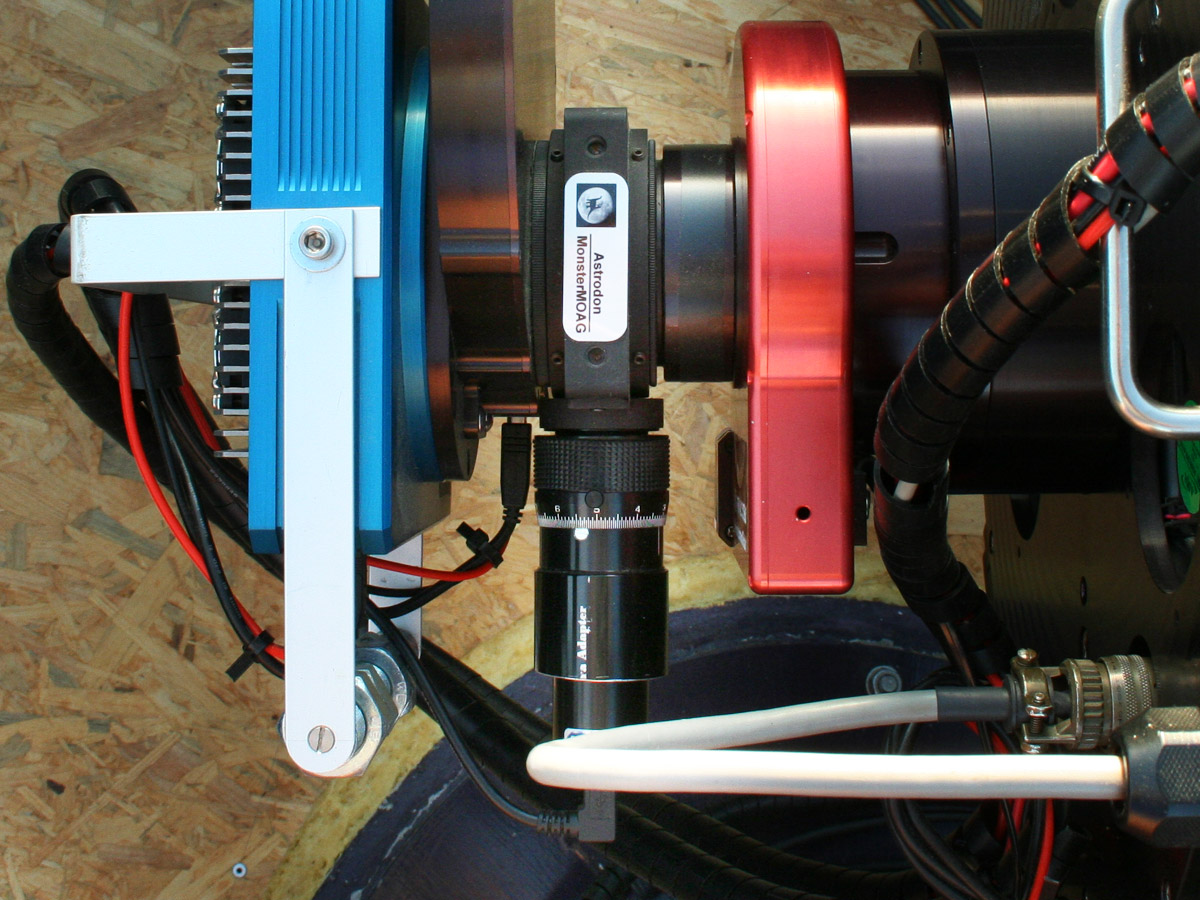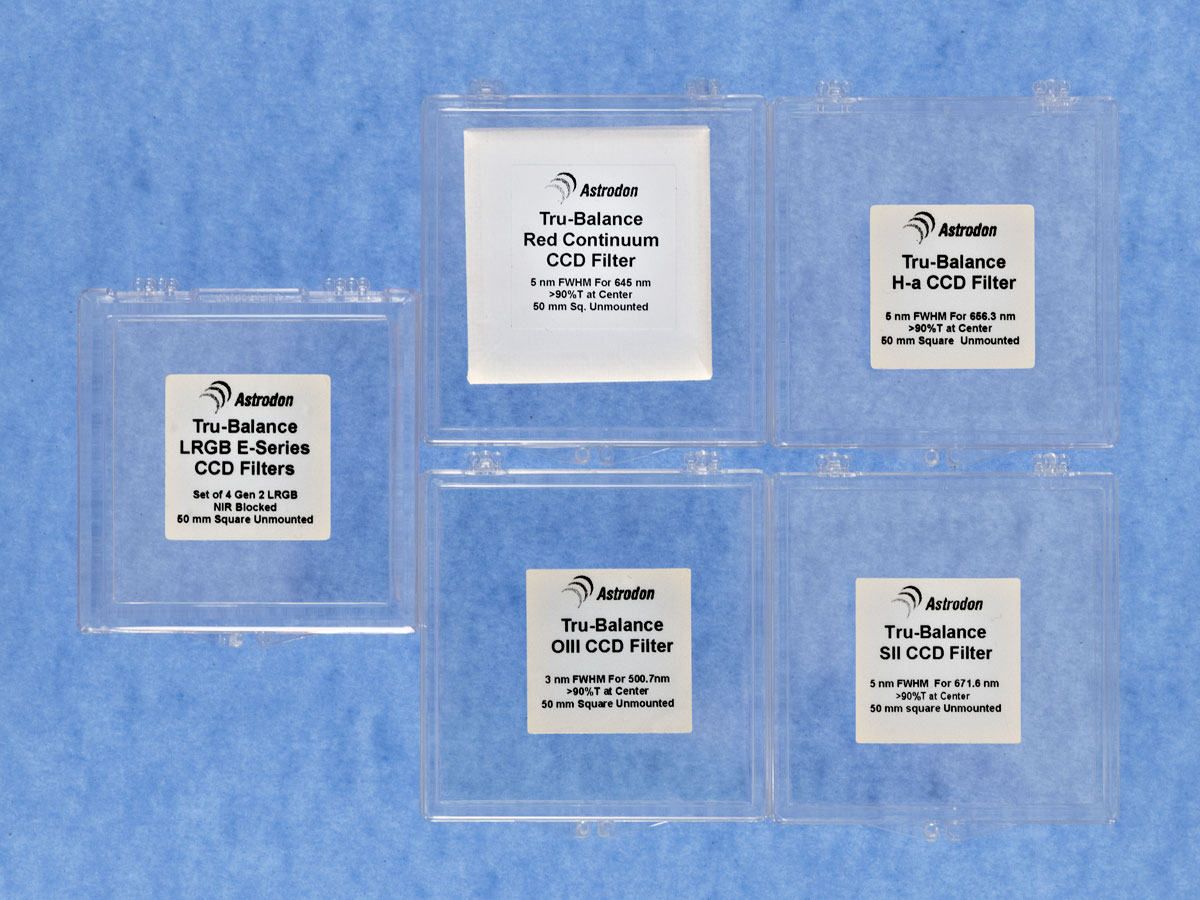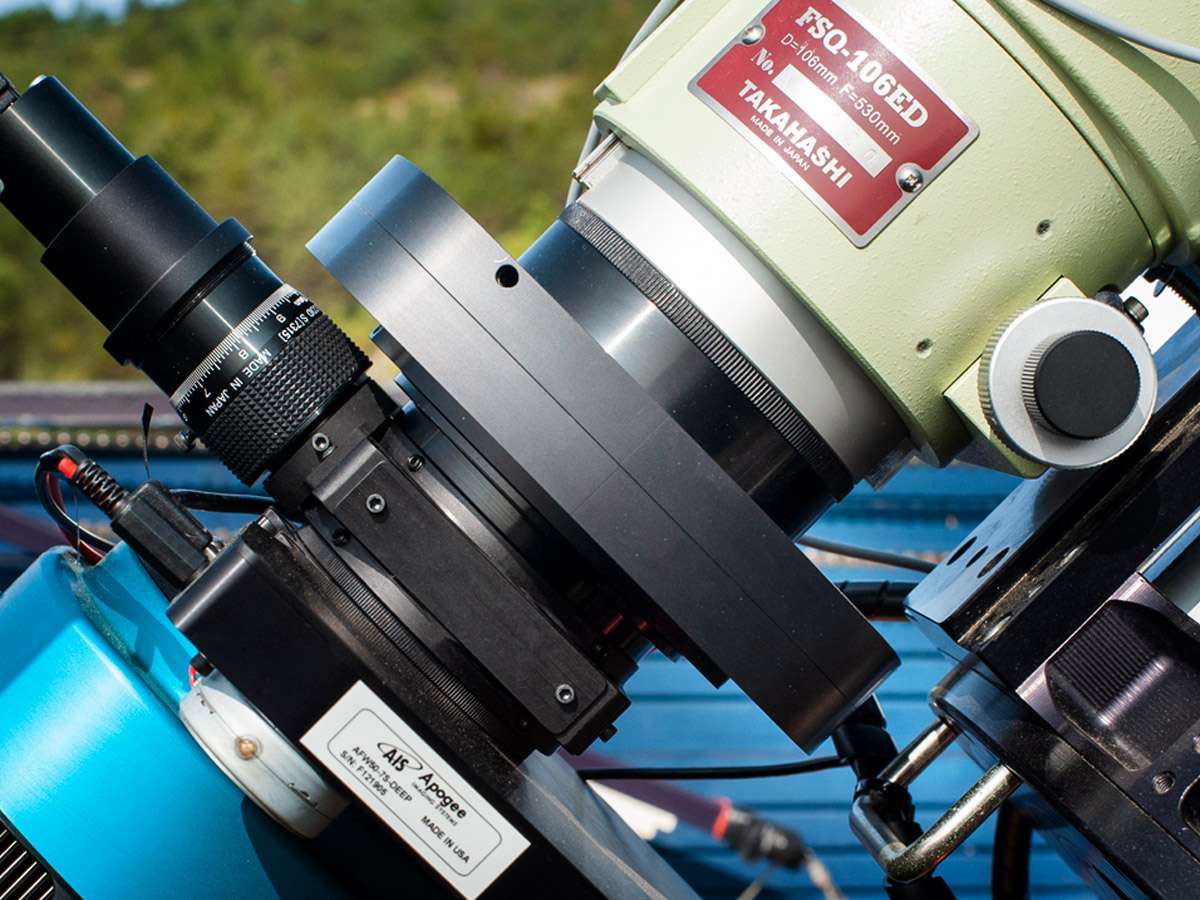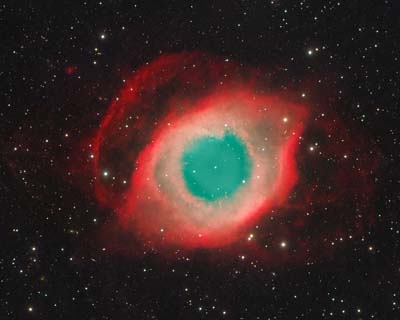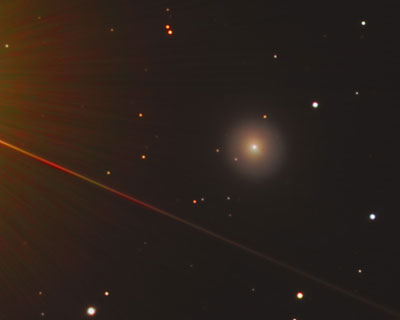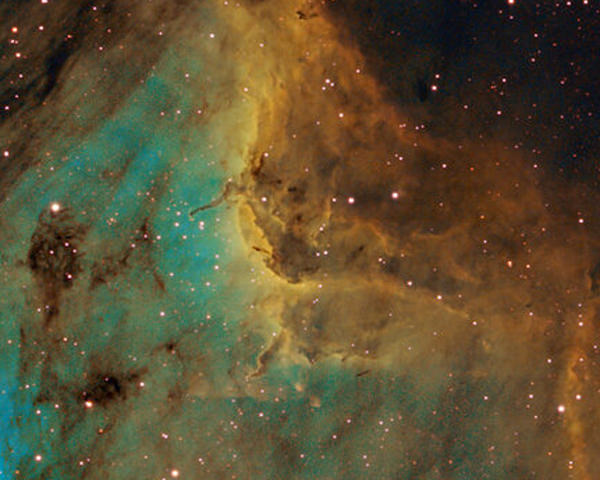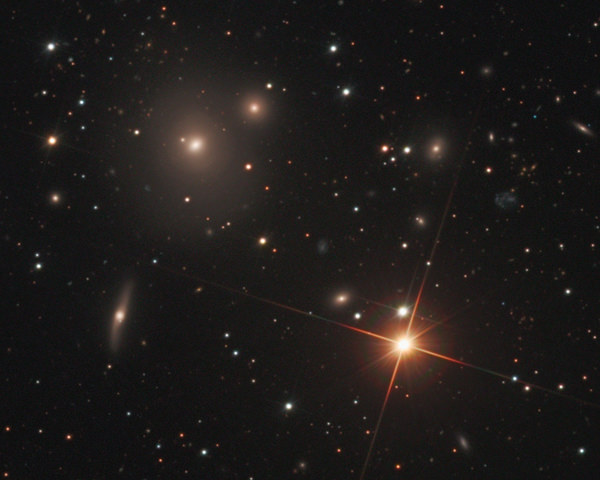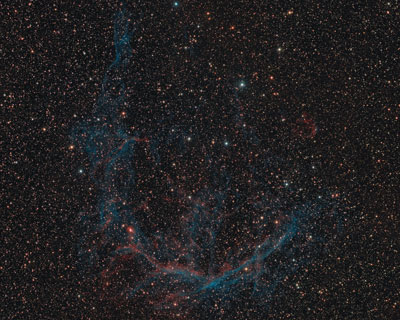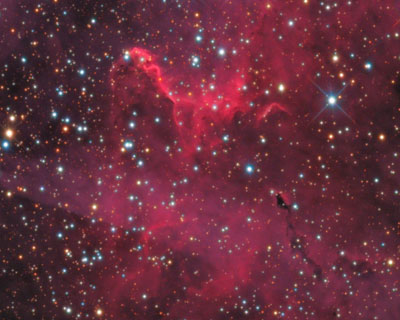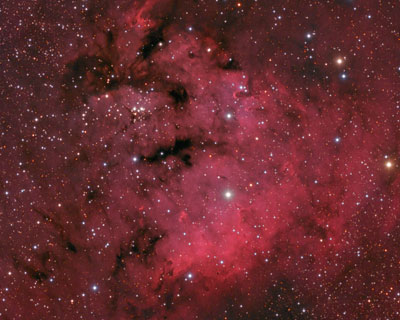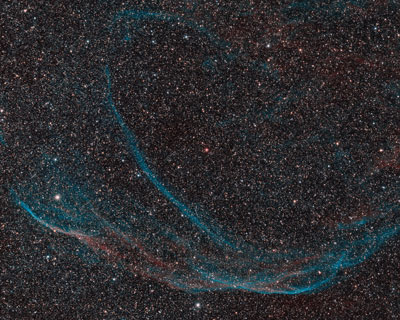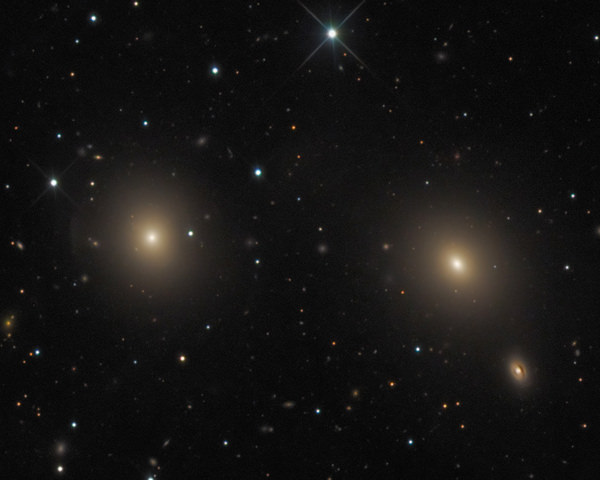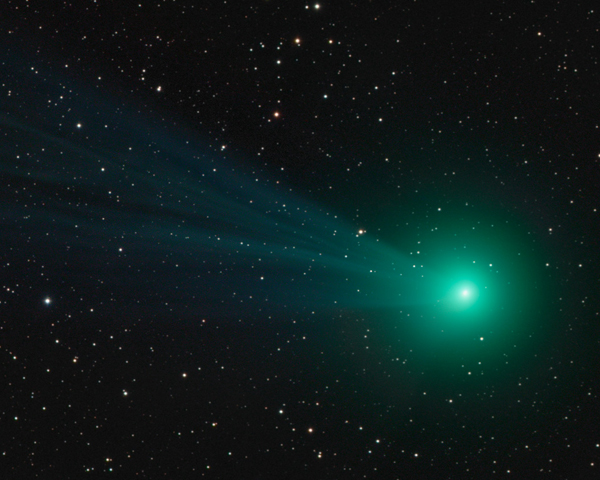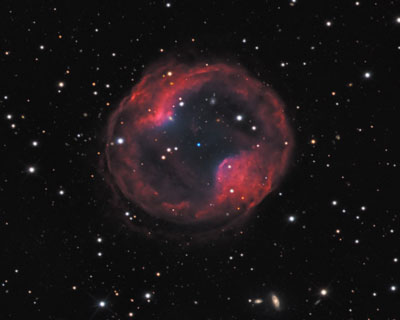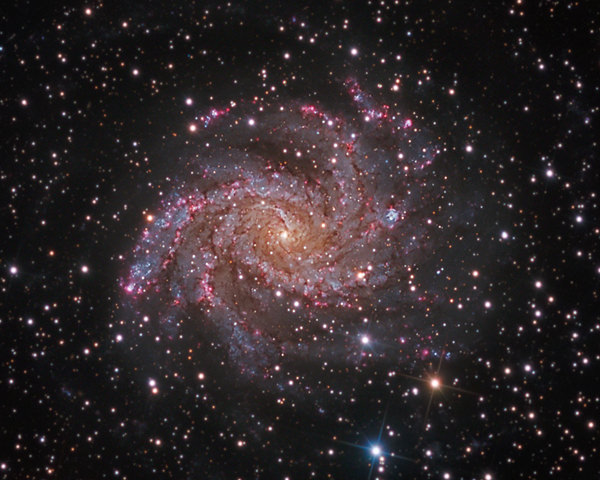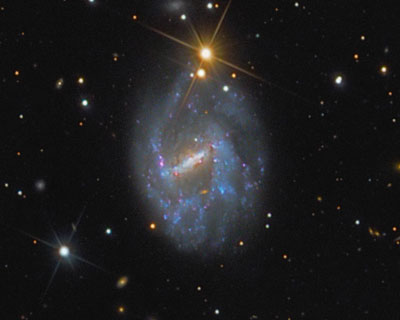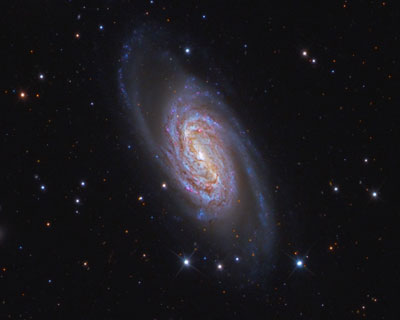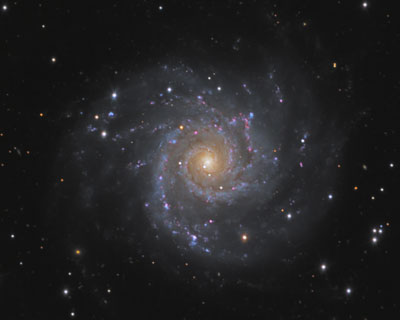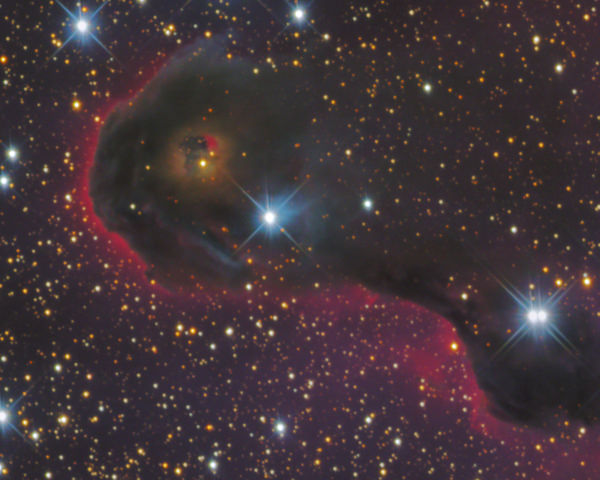Equipment

Roll-off Roof Remote Observatory
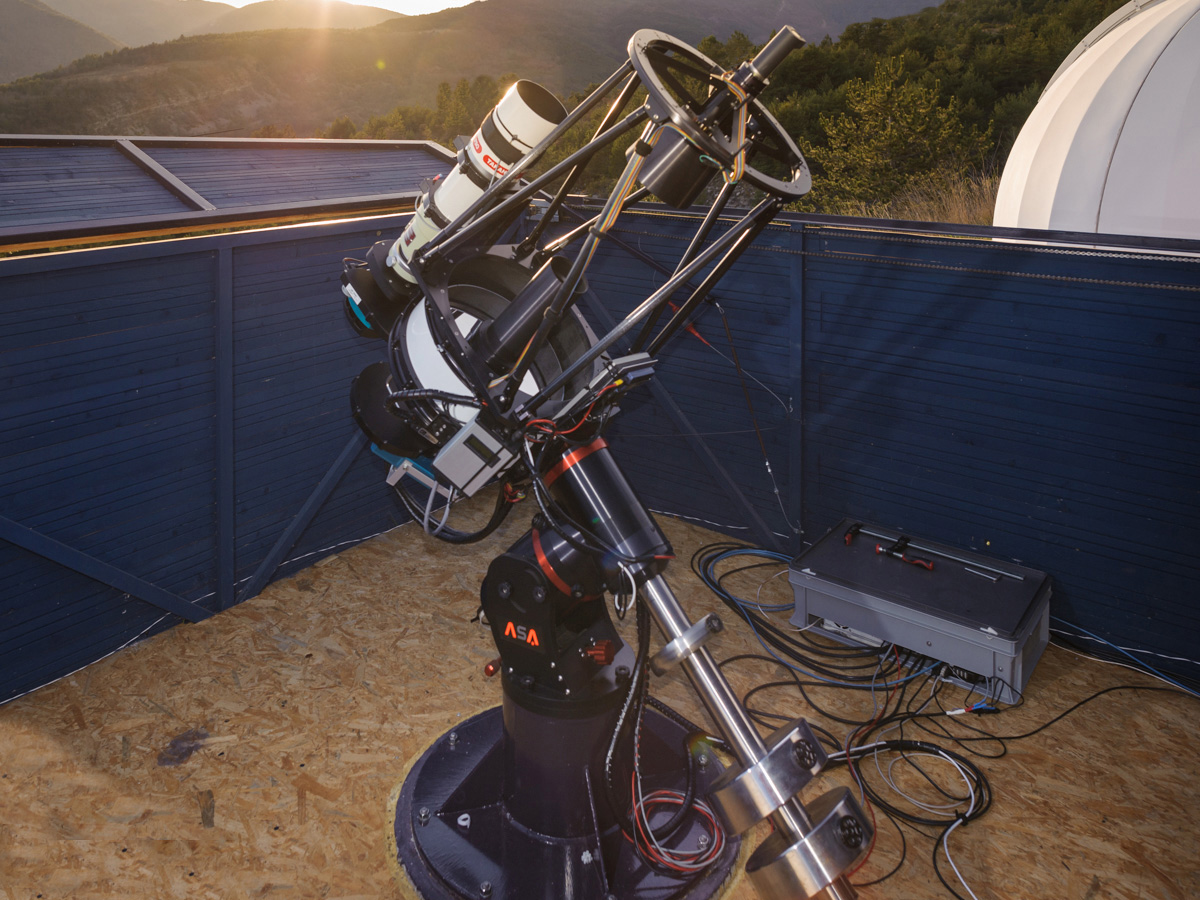
My Setup
The observatory houses two telescopes on a common mount on a custom built pier. Both telescopes are equiped with CCD camera, filterwheel, focuser and off-axis guider. They are actually used alternatively dependig on the type of object imaged.
A custom built PC with server components controls mount, cameras and auxilary equipment. A second PC is handling different weather sensors and is sending the data to our common website. CCDCommander together with home made scripts (Perl, Python) allow fully automated operation of the setup.
ASA Direct Drive Mount DDM85
My telescopes are carried by a ASA DDM85 Direct Drive mount with encoders on both axis. It load capacity is about 65kg. When I added the FSQ 106 EDXIII, I changed to the longer counterweight shaft to minimzed weight and resulted in much better stability. It works very precise and reliable over the past years.
RCOS 14.5″ f/8 Carbon Truss
The RCOS 14.5″ f/8 is my main instrument with about 2.8m focal length. Focusing is performed by moving the secondary mirror. Once collimated, there was no need for recollimation since years. Thanks to the fact that the telescope has no relevant termal focus drift, it is not required to refocus during an imaging session. Focuser, rotator and fans are controlled by TIM, the Telescope Interface Module.
RCOS 70mm Precision Instrument Rotator
To find usable guidestars near an object, the camera and off-axis guider with guidercam can be rotated by a 70mm PIR. In addition, a 70mm field-flattener is mounted inside the rotator. The RC with the flattener at the correct position delivers a nearly flat field even for very big sensors.
Astrodon MOAG Off-Axis Guider
Apogee Alta U16M CCD Camera
An Apogee Alta U16M with a KAF-16803 CCD sensor is used to collect photons. It can be cooled about 45° C below ambient. In most cases, I am using preflashing to eliminate ghost images. An Apogee FW50-7S filterwheel is mounted directly to the camera body and holds seven 50mm square filters.
Starlight Xpress Lodestar X2 Autoguider
A Loadestar guidercamera is in use for both telescopes. Because the camera has no shutter, I am using darks at fixed exposure times for calibrating the guider images to minimize hotpixels. To work properly, the Lodestar need to be connected to a powered USB hub.
Astrodon Gen2 Premium Filters
Since the beginning, I am using Astrodon filters. To cover the KAF-16803 sensors, 50mm square filters are required. For natural color images, a set of LRGB Gen2 E‑Series filters are used, while Ha 5nm, OIII 3nm and SII 5nm are used to create Hubble Palette images or to enhance natural color images.
Takahashi FSQ-106EDXIII Telescope
To allow widefield imaging, an FSQ-106EDXIII refractor is used on top of the RCOS. The four lenses Petzval design results in pinpoint stars allover the field even for very large sensors. As the focus is drifting with temperatur changes, regular refocussing is required during imaging nights.
Andor Aspen CG16M CCD Camera
To create a really big field of view, an Andor Aspen CG16M CCD camera with KAF-16803 (36mm square) sensor is attached to the FSQ. With a pixelsize of 9um, the angular resolution of the setup is about 3.5 arc sec/pixel. The cooling capacity of the camera is about 55° C below ambient.
FLI’s Atlas focuser
An FLI Atlas focuser is used for remote-focusing. The standard FSQ focuser is used for moving the CCD sensor at an optimal position, so that the Atlas is able to reach the correct focus. Thanks to it rigid design, it is able to carry the CCD camera, filterwheel and off-axis guider without flexure.



